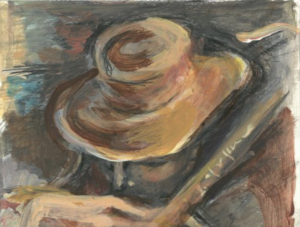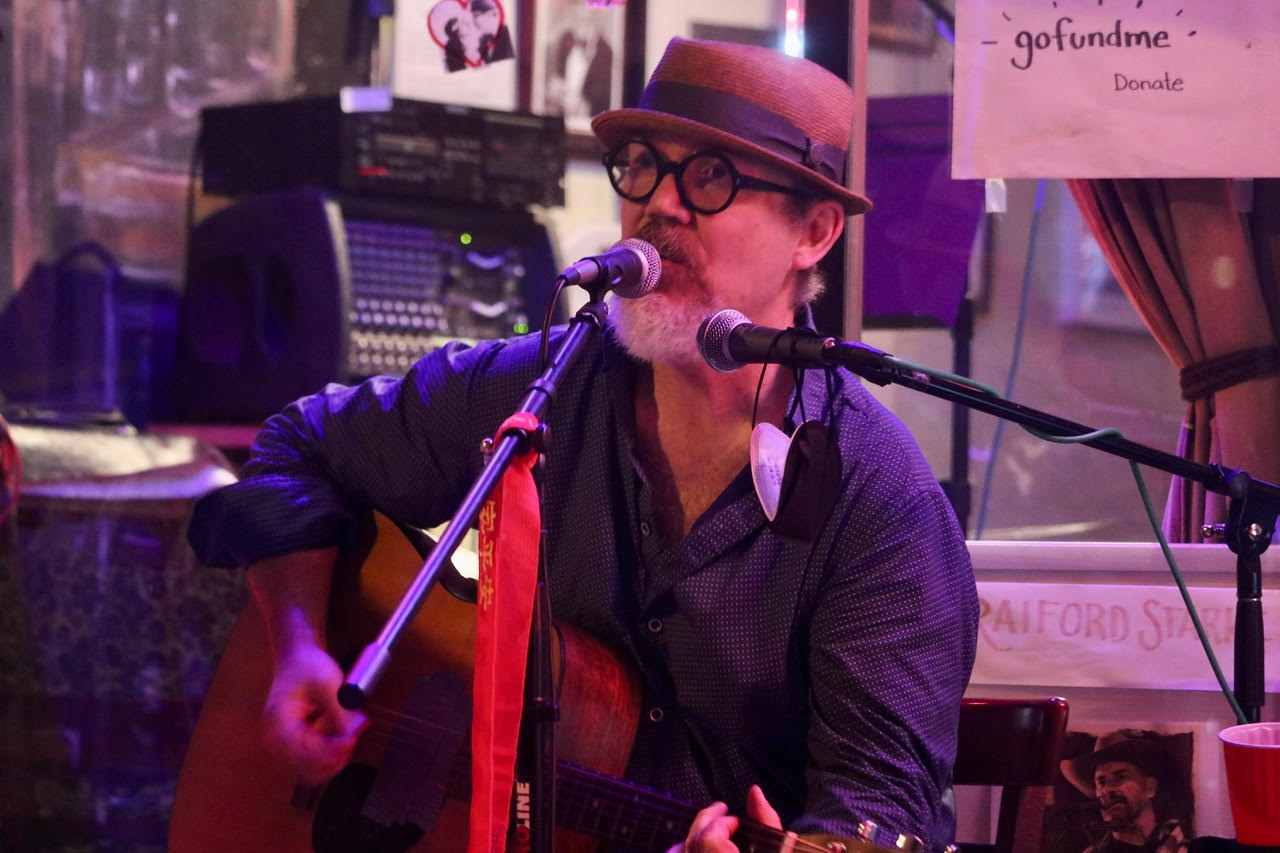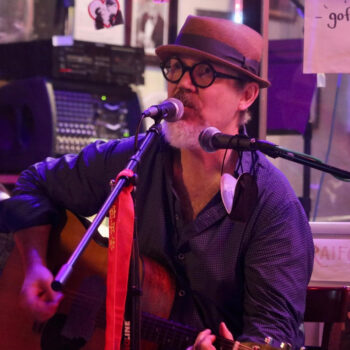
I look forward to the release of Portraits of the Blues, a record and book on country blues (Arco Records & Sisyphus Publishing). Release in Summer 2024. The album is produced by the Nashville based producer and musician, Jack Shawde, who also plays numerous instruments on the tracks. It features arrangements of the following songs.
Catfish Blues (Robert Petway)
Backwater Blues (Lightnin’ Hopkins)
Love in Vain (Robert Johnson)
Big Road Blues (Tommy Johnson)
Pay Day (Mississippi John Hurt)
Devil’s Got My Woman (Skip James)
Hard Time Killin’ Floor Blues (Skip James)
Shinin Moon (Lightnin’ Hopkins)
The book explores the biographies of the artists, but also discusses some background issues of the blues, with a somewhat philosophical lens. It also features portraits of the artists discussed from Irena Gapkovska, a Macedonian born artist who presently lives in Perpignan, France. Here is a sample from the book. Above is an image from Irena.
Chapter 1: Introduction
“I be troubled, I be all worried in mind
Well honey, ain’t no way in the world
for me to be satisfied
And I just can’t keep from crying”
(Muddy Waters)
Blues music is distinctly American. Its roots are embedded in the black sorrow songs, hollers, and spirituals, merging with white, southern, folk music. Blues originated among African Americans as a transcultural phenomenon—emergent from the African traditions transplanted into a soil not only affected by the new musical styles, but also by the pathological cruelty embodied in systems of racial injustice. “Blues” is unique in designating not only a musical style but also an emotional state of sorrow. The latter, as embodied in the music, is in my view expressive of the universal suffering of human life—but it was born of a particular sorrow, the afflictions of African Americans in the United States.
One often noted testament to this music being of African American rather than African origin is that the blues does not emerge in any of the other cultures that had enslaved peoples of Africa. It doesn’t emerge in Haiti or Jamaica or anywhere else in the Caribbean. It emerges as a product of forces at play in the U.S. The African Americans who created the blues had been in the United States for many generations. In contrast to various areas of the Caribbean that long continued the slave trade with Africa, continually bringing new generations of Africans to their soils, enslavement in the US became more thoroughly intergenerational. And much of the African cultural influences that remained among African Americans had been augmented under the dominant cultural influences of the United States.
Blues music doesn’t have a linear origin. Elements contributing to its development are the musical traditions of Africa, mixed with influences of music and instruments of Scotland and Ireland, the experience of oppression through the slave period of U.S. history, through the failed efforts of reconstruction and the extreme repression of the Jim Crow South. We can look to musical internal influences on the form. It comes to be primarily identified with a 12 bar of 16 bar form, with blue notes, with a tendency to have two repeated lines followed by a third divergent one: “If the river were whisky and and I were a divin duck (2x), I’d swim to the bottom and never come up.” But not all blues shares these features.
We can also look to technologies to understand the origin of the blues: the type of instruments that were developed, like the blues harp and the guitar that came to dominate early blues or the later electric amps and microphones, which influenced the direction of the art form. Similarly, we might look to the formatting requirement dictated by the recording technologies, which resulted in demand for songs of about three minutes in length, the length that the major recording technology allowed. This came to be replicated in the desired radio format. So 18 minute songs like Charlie Patton’s early work became rarer and three minute songs like Robert Johnson’s became more common. Also key were decisions by the music industry in the 1920s to produce music that was marketed to particular races. The “race catalogues” like Okeh and Paramount, marketed blues to African Americans and hillbilly music to white rural folk. These economic decisions helped cement demands and erect a starker barrier between music genres where previously in many cases there had been less of one.
Another factor that influenced blues becoming what it became was the oppression of the folk from whom this folk music emerged. The themes of early blues are the themes of particular importance in black America, with an emphasis on wandering, one of the great freedoms that distinguished the lives of African Americans in the post-Bellum South from their lives in the period before that, but also the impoverishment of the community producing this music, which became even more extreme in the Depression.
Blues comes into existence as an aggregate of numerous factors. It becomes defined by a characteristic form, but also by the themes of the lyrics. In its earliest period it comes to be largely identified with black Americans. And as already noted, “blues” designates more than a musical form. The term “blues” or “blue devils” had described deep sadness since the 17th century in Europe. The term, used in reference to music, evokes the emotion. More than any other musical genre, blues becomes associated with the expression of a particular emotion.
Yet blues music does not only express the emotional “blues”: It becomes a means for working through or exorcising the blue emotions. Blues artists continually speak and sing of having the blues and of their desire to get rid of the blues. The music is experienced by many of its players and its audience alike as a means to sort through the troubles of life. Enjoyment of the blues becomes a kind of musical therapy. Sometimes the blues are thought to be existential, part of the general human experience. Sometimes they are identified as more particular to the black American experience of those who originated the genre.
Blues in the meantime is acknowledged as one of the premiere cultural contributions of African Americans—or anyone else—to the 20th century. It was however slow to gain this recognition. Among the early 20th century U.S. black and white churchgoers, it was often shunned as “the devil’s music.” Among a majority of early 20th century intellectuals, it was thought too primitive of an expression of art to deserve our attention. Even black middle-class intellectuals of the early 20th century generally thought it was too dirty and raw to fulfill the political role that the many of these intellectuals believed great African American art should fulfill—of leading white America to see the humanity of its racially oppressed minority population.
Nonetheless, the blues made its way from a black subculture of the country and the original race labels of the 1920s into mainstream American culture—in ways the intellectuals of the time had not anticipated. Country blues went on to influence urban electric blues, rhythm and blues, soul, and rock music. The countrified versions were also “rediscovered” in the blues revival of the 1960s, where the music gained a political salience in this movement, as most of the aficionados took it up in part as a stance against the tradition of racism that had has been such a strong undercurrent in American society. Though blues did not so often have an explicit political message, it nonetheless became a political music, demonstrating that the meaning of an art form is not limited by the intensions of its creators.
Blues has become a part of our universal cultural inheritance. In this book, I honor that inheritance, offering portraits of artists who have influenced my own recent foray into country blues music and who feature on my album. Portraits of the Blues is written to accompany that album. In it I intermix biographical overviews of the artists featured on the record with hints of philosophical and socio-cultural themes relevant to the artists’ lives and work as well as the broader reception of blues.
The portraits that follow speak to the context of the origin of the music of these artists. Typical themes in the biographical portraits include the religious views of the artists or portrayed in the songs they wrote. Sometimes it highlights political stances. Now and again it touches on the question: What is the blues?




Recent Comments